I was in a rut. My wheels were spinning. I didn’t feel 100%.
So as an experiment, I decided to do something a little extreme . . .
I recently read the book 10 arguments for deleting your social media accounts right now by Jaron Lanier.
After reading this fabulous book, I realised I was in a toxic relationship with social media. It felt like Stockholm Syndrome. I could see my emotions, mind and attention were being tinkered and messed with.
As Nicholas Carr shares in his book The Shallows:
“I’ve had an uncomfortable sense that someone, or something, has been tinkering with my brain, remapping the neural circuitry, reprogramming the memory. My mind isn’t going – so far as I can tell – but it’s changing. I’m not thinking the way I used to think.”
I could relate to this. My mind was starting to feel different, too.
I had no time or desire to go on a short break by deactivating my accounts. I could see this technology was causing my brain harm. It was time to call it quits.
Not at all. My only regret is I didn’t delete them sooner.
Without social media in my life, here’s what I’ve experienced:
• I have more free time.
• I feel more confident.
• My focus is better.
• I’m less stressed.
• I’m happier.

Due to the intermittent reinforcement social media provides, checking it can become a bad habit. What can bad habits turn into?
Addictions.
An addiction is something you enjoy doing in the short term but ultimately, it undermines your wellbeing in the long term – but you do it compulsively anyway.
For instance, do you ever find yourself mindlessly reaching for your phone when your work/study gets a bit challenging?
I’m guilty of this. We all do it.
Unlike substance addictions, social media addiction is a more respectable kind of addiction. It’s totally normalised. Lots of people spend significant amounts of time on social media and no one says, “I think you have an addiction . . . I think you need help”.
But I could see where I was heading with social media. With my addictive personality, I needed help.
To protect my psyche, two years ago I setup rules and installed technology to restrict my time on social media. Here’s what I did:
• I used an internet blocker app (Freedom) to lock myself out of social media for most of the day
• I limited my sharing (posting only one to two times per week)
• I could only access social media on my laptop (not on my phone)
• I engaged in several digital detoxes and Digital Minimalist practices
But I still used social media for about 15-30 minutes each day. It was part of my daily routine.
Whenever I was feeling bored, logging in and checking my messages provided me with a little shot of dopamine, but I was never left feeling totally satisfied.
You’ve probably noticed people tend to post the best bits of their lives on social media. The highly curated posts can make you feel like a total loser.
One woman in my community started posting pictures of her pets lazing around her mansion. I’d compare my old house to hers and I’d just feel bad.
But it wasn’t just the upward comparisons that were making me sad . . .
Conspiracy theories. Fake news. Racist posts. Angry and/or ignorant comments. People say things online that they’d never dare say to another person’s face. As Jaron Lanier states:
“With nothing else to seek but attention, ordinary people tend to become assholes, because the biggest assholes get the most attention.”
During COVID lockdown, I had a friend write a series of awful comments on some of my posts. Several friends asked, “Who is this person? He’s trolling you”.
It was painful and confusing because in real life, I really liked him. I always found him to be a generous and kind person. But on social media, his inner troll had been unleashed. It was running wild.
But he wasn’t the only person who was acting weird and nasty . . .
I noticed that sometimes I felt annoyed and angry as I scrolled through my feed. Thoughts like these swirled through my head:
“I don’t care that your fiancé bought you an $80,000 car. Stop flaunting your wealth!”
“Why are you posting this conspiracy theory nonsense? This is dangerous. You idiot!”
“Your dinner looks so unhealthy. Where are the vegetables? You’re heading for clogged arteries and a heart attack!”
Even now I feel awful typing these thoughts out. But I can’t deny it. Social media had unleashed Judgemental Jane.
The temptation was there to write something nasty. Most of the time, I didn’t post my nasty thoughts, but a couple of times I did. I swotted people down. Thwack!
Let me make it clear, it’s not something I feel proud of. But I also know I’m not alone.
Jaron Lanier argues we all have an inner troll/ugly alien that we need to keep a close eye on. He states:
“Each of us has an inner troll. In the early days, before everyone was doing it, the air was clearer and it was easier to notice how bizarre it is when your inner troll starts talking . . .
It’s like an ugly alien inside you that you long ago forgot about. Don’t let your inner troll take control! If it happens when you’re in a particular situation, avoid that situation! It doesn’t matter if it’s an online platform, a relationship or a job. Your character is like your health, more valuable than anything you can buy. Don’t throw it away.”
He also advises:
“If, when you participate in online platforms, you notice a nasty thing inside yourself, an insecurity, a sense of low self esteem, a yearning to lash out, to swat someone down, then leave that platform. Simple.”
So that’s what I did. I left. I hit delete.
And in that moment (of hitting delete), I felt this incredible sense of relief.
Facebook makes it quite difficult for you to leave. Thankfully, there are lots of simple videos (like this one) that show you how to exit the platform with ease. You just need the strength and resolve to do it.
Initially, I was reluctant to leave Facebook. I had a lot of photos from special events stored on the platform (e.g. my wedding day and bush walks with friends). The thought of having to go through and download each and every picture felt like a hassle. I didn’t have time to do that.
But I soon discovered that there’s an easy way to download all your data (including photos) from Facebook.
You can download every comment, every photo, every group and page you’ve ever liked all in one zip file. So before quitting, that’s what I did.
It took only 10 minute for Facebook to collate all my data into a zip file (file size: 1.22 GB).
Even if you don’t have any desire to delete social media, I highly recommend you download all the data that’s been collected on you.
Open up your data file and scroll through the thousands of comments you’ve made (yes, there will be thousands).
Here are some of my past comments:
“Awesome!!!”
“Ouch! Sending healing vibes your way!”
“Fancy pants! Looks great!”
You’ll soon realise (as I did) that a lot of your precious life energy has been wasted in useless pontificating.
It was time for me to get real. If I’m totally honest with myself, 98% of what I was doing on social media was not a good use of my time and energy.
The thing about time is it’s your most precious and valuable resource.
Harvard university researcher Dr Ashley Whillans shares in her book Time Smart:
“No matter our age, education, or income, we share the same reality: none of us knows how much time we have left. One day, time runs out and tomorrow never comes. This is one of the core discoveries I’ve made researching time and money: we don’t understand well that time is our most valuable resource, and it is finite.”
Instead of engaging in mindless scrolling in the evenings, I’ve cooked healthy meals. I’ve had some great conversations with my family and friends. I’ve started doing yoga classes.
I feel much happier and a lot less stressed. In fact, a study by the Denmark Happiness Research Institute found that regular Facebook users who took a break from the platform were 55% less stressed. They also reported that they felt happier and had better concentration.
Hell no!
Lanier states, “The internet itself is not the problem.”
I’m no luddite. Technology and I are still pals. But for the sake of my brain and wellbeing (and to keep my character intact), I have unfriended social media.
I still access the internet. I send emails. I share my ideas on my website and via my e-newsletter. I stay up-to-date with world events by going direct to news websites. If I want to connect with friends, I send a text or call and we organise a time to catch-up.
Lanier’s call to action is simple. He says:
“To free yourself, to be more authentic, to be less addicted, to be less manipulated, to be less paranoid . . . for all those marvellous reasons, delete your accounts.”
Maybe deleting your accounts isn’t the right thing for you to do. That’s okay. But please, do yourself a favour and take a break from social media. Use that time to reassess your relationship to social media and think about the kind of person you want to be in the world (and the kind of life you want to live).
Deleting social media helped me get out of a rut. I’m more engaged with the world around me and the things that keep me grounded and nourished. It’s brought me a step closer to the things that I value most.
Share This:
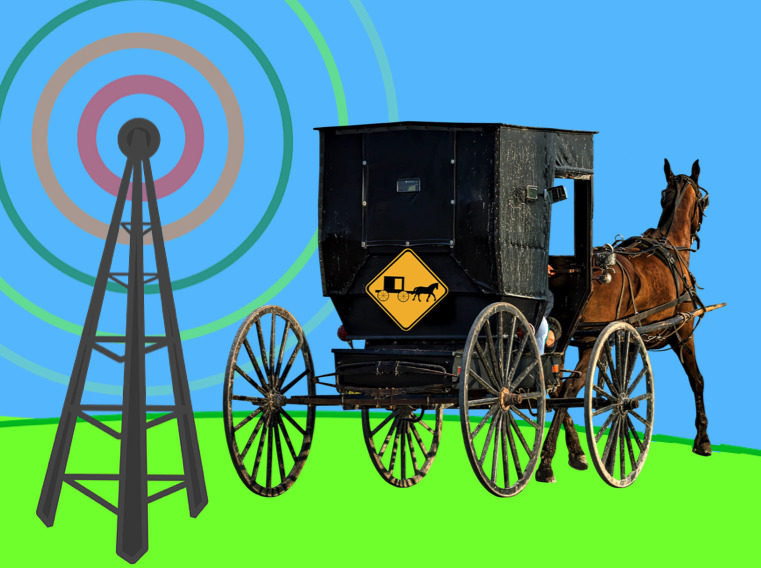
If I’m honest with myself, there was a time when technology was doing me more harm than good.
On Facebook, I frequently fell into the comparison trap (comparing myself to people who had posted delicious dinners, amazing holiday photos, etc).
On Twitter, I’d get baited by trolls (and I’d foolishly take the bait).
Throughout the day, I’d constantly check my phone and email, which left me feeling jittery and chaotic.
Big Tech was constantly hijacking my time, energy, and attention. Every time I retreated to my devices for a quick shot of dopamine, I moved further away from my goals. I didn’t like this, and I knew something needed to change.
Over the past three years, I’ve implemented many practices to regain control of my time, energy, and attention (including deleting all social media).
These practices have made a big difference in my life. But I’m well aware that not everyone feels the same way I do about Big Tech, nor are they in a position to be able to delete all their accounts.
Following a school presentation, I spoke with a small group of year 8 students. I shared with them that I didn’t use any social media, to which a year 8 girl quickly chimed in:
“My grandma has Facebook. What’s your excuse?”
Her words struck me like a bolt of lightning. I didn’t know what to say.
It highlighted how adopting these apps is the norm for a young person.
When everyone else has a smartphone and is using social media (including your parents and grandparents), why would you question using them?
I couldn’t forget the year 8 girl’s words. While I appreciated her candidness, it left me slightly disturbed.
At the same time, it increased my motivation to resist Big Tech. I started searching for role models: people actively resisting Big tech and this hyperconnected, fast-paced way of life.
One community kept popping up in my research: the Amish.
The Amish are often portrayed as being technologically impaired. A classic example is Weird Al Yankovic’s music video Amish Paradise (a parody of Coolio’s mega-hit Gangsta’s Paradise).

In this video, Weird Al sings:
I never wear buttons but I got a cool hat
And my homies agree I really look good in black, fool
If you come to visit, you’ll be bored to tears
We haven’t even paid the phone bill in 300 years
But we ain’t really quaint, so please don’t point and stare
We’re just technologically impairedThere’s no phone, no lights, no motorcar
Not a single luxury
Like Robinson Crusoe
It’s as primitive as can be
While the Amish still mainly travel by horse and buggy and shun many modern technologies, such as televisions, radios, and cars, they are not ‘technologically impaired’ as Weird Al makes out.
When it comes to cultivating healthy digital habits, there is a lot we can learn from the Amish.
The Amish have a set of strategies that guide the adoption and use of different technologies. These strategies have allowed them to avoid being pawns for the goals of Big Tech companies, which make massive profits by seizing people’s attention.
I recently read a fascinating book called Virtually Amish, written by Dr Lindsay Ems. For her PhD research, Dr Ems spoke to Amish people about their relationship to modern technology (e.g., smartphones).

She argues that the Amish take control of their tech tools and thrive. Through adopting similar practices, we can thrive, too.
Below, I share how you can thrive by emulating Amish practices and beliefs around technology:
The Amish are not technophobes. They are ‘technoloselectives’.
They carefully consider the tech tools they’ll adopt and their functionality, tweaking them to help them achieve their goals.
The Amish don’t mindlessly purchase the latest gadgets and gizmos. Instead, they think about their values and goals and how the technology could cause unintended harm to themselves and the wider Amish community.
What are your goals?
Do your tech tools help you achieve them, or do they distract you from them?
The Amish are guided by their values (i.e., the things that are most important to them). Their values underpin everything they do.
So, what exactly do Amish people value?
• Community
• Connections with others
• Living a simple and slow-paced life
• Living a spiritually rich life
• Being self-sufficient
The Amish use these values to guide their adoption of technology.
An example of this can be seen with the arrival of the home telephone (not smartphone). Dr Ems shares how the Amish decided to ban the telephone from being inside the family home.
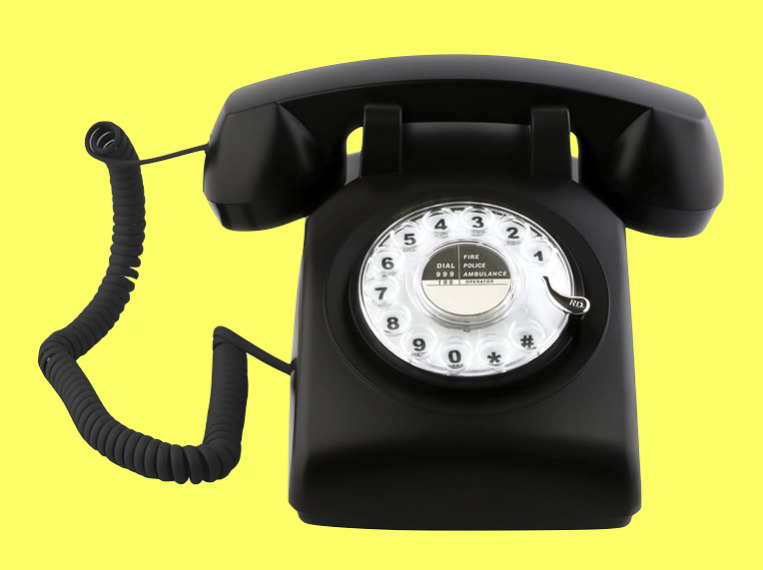
This ban came about after careful consideration and reflection on their values. The Amish value connections with family, friends, and the community. They don’t want to be the kind of person who interrupts a conversation by answering a telephone call. For this reason, telephones are located outside Amish family homes or nearby.
What are the things that are most important to you?
How does technology impact on those things?
Does it enrich those things or diminish them?
The Amish understand that technology can cause harm. Subsequently, they intentionally delay adopting new technology until they see its impact on others.
Does it destroy family life? Does it wreak havoc on their ability to pay attention and distract them from their spiritual life?
If so, the technology threatens their culture and religion, and for these reasons, it should be avoided.
Before adopting a piece of technology, the Amish need to be clear about two things:
1) The functionality of the technology (what it can do)
2) The potential social impacts of the technology
Once they deeply understand these things, it is then decided whether the technology is adopted or not.
It may come as no surprise that Amish people view the smartphone as an incredibly dangerous innovation. Many Amish communities have bans on this device.
How do you feel after spending time on social media?
Have you seen things posted on social media that weren’t true or were exaggerated?

When an Amish person wants to use a new technology, that technology will go through a formal decision-making process.
The community (in particular, the leaders) will consider the future with this technology. They’ll try to imagine how the technology could change their way of life.
Questions the Amish reflect on include:
• What are the advantages and disadvantages of the technology?
• What might come with it that we might not anticipate?
• Could someone get addicted to it?
• Is it a need or a want?
• Can the technology be restrained?
In her book Virtually Amish, Dr Ems provides the example of an Amish business owner asking the community leaders if he could have permission to use a label maker for his business.
After careful consideration, the leaders ruled label makers could be allowed for the following reasons:
• They are not addictive
• They can’t be used for recreational purposes (e.g., playing games or entertainment)
Think of a new technology (device or app) you want to adopt. Could it become addictive?
Many Amish people believe the issue is not whether you use a smartphone or social media but how you use it. It’s important that the Amish remain in control of their use of tech and place limits on it.
It’s also important that the technology is not visible (i.e., you don’t pull your smartphone out in Church or during a conversation). Being discrete in the way one uses technology shows respect for Amish values.
How do you use the tech in your life?
Are you in control of your use?

Amish people think about not just how they use the technology but what kind of person they become when they use it.
This point resonated with me deeply. I can’t say I’ve always liked who I become when I use certain technology.
A few years ago, I babysat my friends’ children when my friends went out for a kid-free meal. I look back and cringe when I think about how the experience unfolded.
Before going to my friend’s place to start babysitting, I got into a heated text discussion with some people in a group chat. Things were said that upset me.
For most of the night, I was on my phone, texting back and forth, not present with these young children. At one point, the little boy tugged on my arm to get my attention. “Aunty Jane, come play!” he said.
What can I say? I felt terrible. This certainly was not my finest moment. I had become the kind of caregiver I am usually quick to judge: distracted and disengaged.
I vowed to avoid trying to resolve issues by text and leave my phone at home next time to be fully present with the kids.
When you use social media, what sort of person do you become?
The Amish take modern tech tools and modify them to help them achieve their goals.
The plain mobile phone is an example of this. Amish people have created a mobile phone that can only make calls. It doesn’t have a camera, games, access to the Internet, or the ability to send text messages.
Similarly, the plain computer allows Amish to make spreadsheets, do word processing, and construct simple drawings. This allows them to complete tasks without being distracted by other things.
In other words, the Amish create what David Kadavy (author of Mind Management, Not Time Management) would refer to as sticky tools. A sticky tool allows you to stay focused on a task without getting distracted.
What sticky tools could you consider adopting (e.g., a basic flip phone and Internet blocker app)?
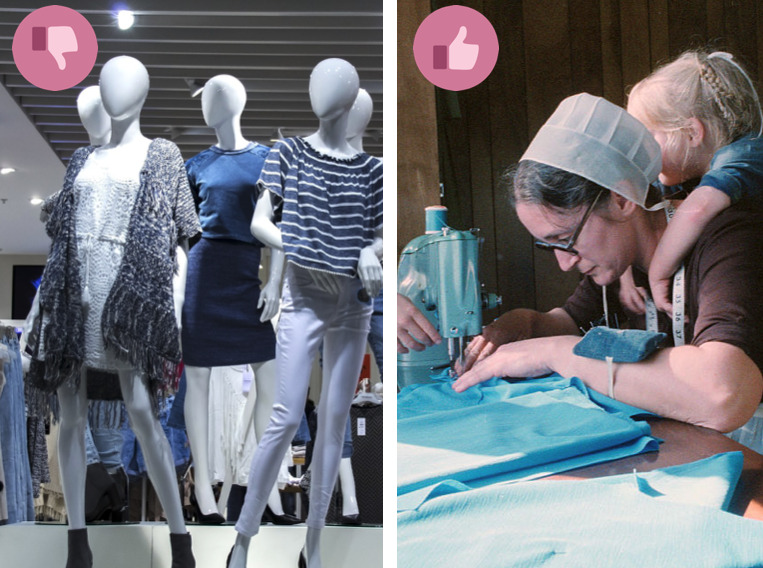
The Amish take pride in growing their own food, raising barns, baking their own bread, tinkering with robotics, inventing, and making their own clothes. They are not big consumers, but they embrace a simple lifestyle and encourage human creativity.
In the modern non-Amish world, many of us are doing the polar opposite of this. We have fallen into the trap of consuming content mindlessly online (e.g., watching people bake bread instead of baking our own bread).
Don’t get me wrong—the Internet is an excellent learning tool to help us build our skills. I have turned to YouTube for many instructional videos on how to make and fix things. But doing this requires discipline because it is all too easy to get derailed by other distracting videos.
The bottom line is this: the more time we spend online, the more ads we are likely exposed to and the more our consumptive desires are stirred up. Is it any wonder so many people feel so dissatisfied with their lives?
Instead of mindlessly consuming, what can you create today?
The Amish embrace tech with inbuilt friction. In fact, inconvenience is considered a virtue.
Dr Ems shares that many Amish technologies intentionally contain ‘speed bumps’ and ‘friction’. The reason for this friction is to prevent Amish people from wasting time on the device.
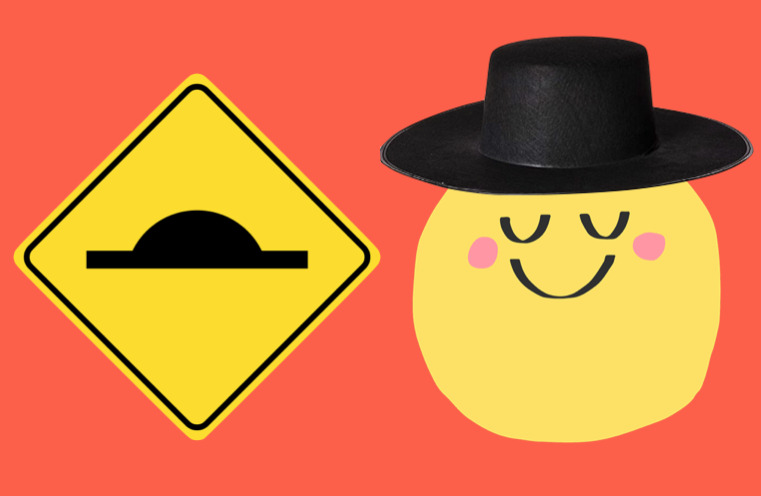
I’ve found this is one of the positives associated with using a ‘basic phone’.
Last year, I experimented with using a basic flip phone with limited functionality (I could only make calls and send texts). Texting on this phone was so painfully slow that it made me want to avoid getting into long text discussions with people. It was easier to pick up the phone and call people.
Using a smartphone to text your friends may be easier than making a phone call, but as the Amish strongly believe, easier is not always better.
How can you build friction into your tech use?
Can you embrace analog alternatives to decrease your screen time?
How much control do you have over your time, energy, and attention? As Chris Bailey writes in his book How to Calm Your Mind, “On the Internet, our intentions very quickly slip from our grasp.”
If you want to thrive online and offline, consider adopting some of the tech habits of the Amish. By limiting their tech use, the Amish have been able to remain mentally free and protect their way of life.
If more of us adopted Amish tech practices (e.g., being intentional with our tech use and placing limits on it), we’d most likely feel calmer and less anxious. We’d also spend more time engaged in activities that bring us joy and are aligned with what we value.

Where I live in Perth Western Australia, there’s an event that happens once a year that demands your attention like no other: The Royal Show.
At this show, there are extreme rides, giant fluffy toys to be won, baby animals you can pat, and much, much more.
Wherever you are in the world, you probably have an event like this, too. And if you do, chances are there is something at the show that is completely attention grabbing . . .
I’ve come to see show bags as being an important metaphor for modern life. Let me explain . . .
When I was a child, I couldn’t wait for the show bag catalogue to be released. I would spend hours trawling through the catalogue, carefully selecting my show bags.
These were big and important questions for my 6-year old brain.
When we finally got to the show, my parents and I would wait in the queue at the frenzied show bag stall. I remember looking up at the display of all the bright colourful show bags and feeling really excited.

If you break down the contents of a show bag, there’s a bit of a formula to them . . .
There’s usually a range of ultra-processed sugary and salty snack foods and a bunch of novelty toys.
If you take a good hard look at the contents of most show bags, there’s nothing that’s really nourishing in there. It’s just poor-quality junk food. Or cheap plastic rubbish that is destined for landfill.

As I got older, I wised-up to these overpriced show bags containing mostly garbage. I stopped buying them.
Now you’re probably wondering, “What do show bags have to do with being able to study effectively? How is this a metaphor for modern life?”
I’ve come to see show bags and the Royal Show as being similar to smartphones, specifically social media apps.
If consumed frequently (even just in small doses), they are potentially damaging to our minds, bodies, and the planet.
Think of it like this . . .
But if you were to have a show bag every day, would you enjoy it as much?
Probably not.
According to addictions expert Dr Anna Lembke, if you consume too much of a pleasurable thing, it makes that thing less pleasurable.
This is why they say, “Less is more”.
There’s a reason the royal show only happens once a year and you can’t buy show bags at the local supermarket. It’s a special occasion. Show bags are designed to be a special treat.
It wouldn’t be so special if it happened all the time. After a while, the novelty would wear off. You’d get bored.
As you emptied the contents of your 50th Bertie Beetle show bag or entered the Gravitron for the 100th time, you’d be like “Meh. Big deal”.
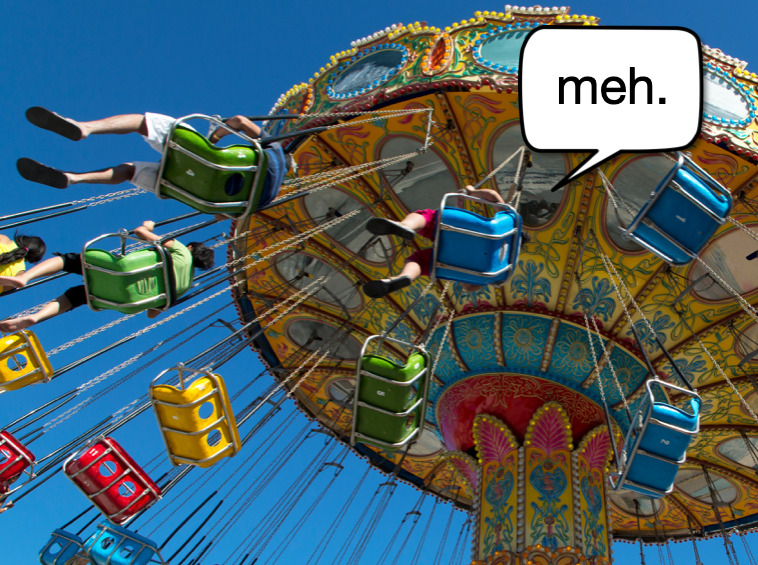
If you don’t believe me, next time you’re at the show take a look at the carnies (the carnival workers). They’re not having fun in sideshow alley. They’re tired. They want to be packing up the rides and getting out of there.
The point is the Royal show and show bags are great once in a while but not all the time.
It’s the same deal with social media. Spending too much time on there isn’t doing you any good.
Switching rapidly from doing your work to your phone and then back again slows you down. It impairs your ability to think and learn. It makes you feel scattered and anxious, too.
It’s time to start thinking of TikTok, YouTube videos and text notifications as the sugary treats, salty snacks, and novelty toys contained in show bags. Nice to have occasionally, but if consumed in large quantities, you’re going to suffer.

Just because everyone is eating Bertie Beetles all day every day doesn’t make it healthy. It doesn’t make this behaviour okay. It just means we’re going to end up with a very sick society.
We can do better. But this means we need to place limits on how much we consume.
When you study with your phone within arm’s reach that’s like having a never-ending show bag of junk food next to you. You can’t fully focus your mind on the task at hand because a part of your brain is thinking about the tasty treats in the bag.
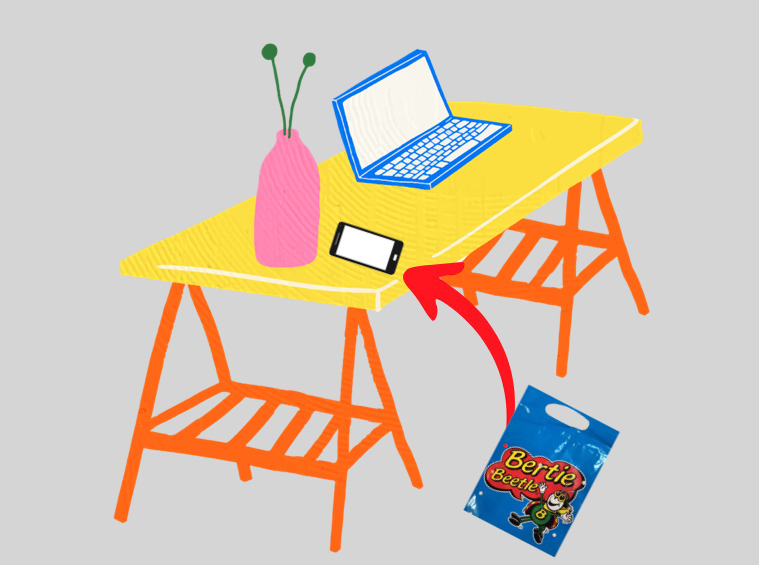
No matter how hard you try not to think about the treats, you can’t help but think about the treats!
It’s not your fault that you can’t resist checking your phone for the treats that await you. Social media apps are designed to be dopamine dispensing machines. Addictive to the core.
How can you fill up on the good stuff (i.e. the stuff that is going to add real value to your life)?
I recently developed a powerful tiny habit. It may sound simple but I highly recommend it. The habit is this . . .
When I notice my phone is in my workspace, I will pick it up and put it away from my body in another room.
In fact, I have a specific home for my phone: it lives in pocket number 1 of a vertical wall hanger in my dining room. I have set times when I can check my phone. But outside those times, my phone stays in pocket 1.

When I put my phone in the pocket, it’s like I’m putting the show bag away on the top shelf of a cupboard and closing the cupboard door. Out of sight is out of mind.
I recommend you give it a shot.
When you first start implementing this habit, you will probably feel a strong urge to grab your phone and look at it. But over time the urge to check your phone will pass.
The thing about focus is it’s like a muscle. You can strengthen it over time by engaging in simple practices, such as putting your phone away when it’s time to do your work and engaging in meditation.
Doing these things may be more difficult than dipping into a show bag or watching TikTok videos, but it’s probably going to deliver far more benefits in the long run.
But most importantly, when you fully focus your mind on what you need to do, there is something inherently satisfying about that. It brings you more joy and satisfaction than any 15 second video could ever deliver.
Image Credit
“Ekka 2004 Showbag Pavillion” by Dr Stephen Dann is licensed under CC BY-SA 2.0 .

The dog pulls the man forward on the footpath. The man drags his feet at a snail’s pace. His neck is bent forward. His eyes are glued to his phone.
The man looks zombified.
He is far, far away from the present moment.
I’m almost certain that he is addicted to some app on his phone.
The image of this man walking mindlessly reminds me of the time I saw of my aunt playing the pokies at the casino. It was like she was in a disassociated state.
This man also seems to be in disassociated state.
All of this got me thinking about the way in which these devices foster addiction and the similarities between poker machines and social media platforms (e.g., TikTok, SnapChat, Instagram, and Facebook).
I felt compelled to write this piece.
In this blog, I explore the psychology of addictive social media platforms and how they are designed to hook you into a short-term dopamine driven feedback loop. I’ll also share what you can do to cultivate a healthier and more satisfying relationship to life itself.
If you use social media everyday, I want you to consider that you may not be fully in control of your behaviour.
Best case scenario? You’ve formed a destructive habit.
Worst case scenario? You’re addicted.
According to addictions expert Dr Anna Lembke addiction is a spectrum disorder. You can be mildly addicted all the way through to being severely addicted.
But no matter where you are on the addiction spectrum, the same system is being hijacked: your reward system.
How do social media platforms hijack your reward system?
It worth spending some time exploring the strategies that are used. As computer scientist Jaron Lanier says, “Awareness is the first step to freedom”.
We can get insights into how social media platforms hijack our reward system by looking at the architecture of casinos, specifically poker machines.
It turns out the strategies used by social media companies come straight from the casino playbook. Let me explain . . .
When you walk into a casino, you are entering a space where there is an extreme power imbalance.
You’ve probably heard the saying, “The house never loses”. Well, it’s true. And it’s not just that the odds of each game that are against you . . .
Casinos are designed at every level to take advantage of people. From the way the interior space is designed to the mathematical computations inside the poker machines, all of these things are geared to keep you inside the casino and playing the pokie machine for as long as possible.
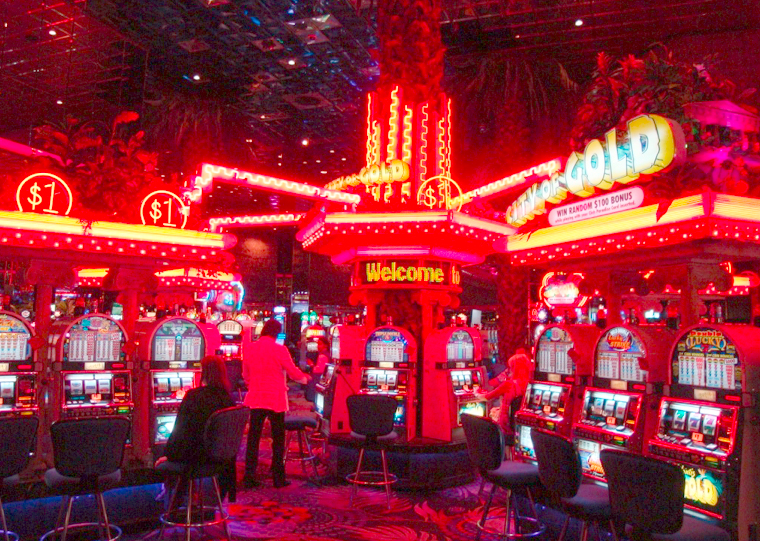
Similarly, when you go on social media you need to imagine that there are thousands of psychologists, statisticians, and designers on the other side of the screen. The job of these people is to steal your attention and make you spend as long as possible on the app.
In both situations, winners are rare. As you’ll see shortly, most people are losing.
Below I share a number of tactics used by the casino industry and how these same tactics are used by social media companies to foster addiction.
According to Cultural Anthropologist Dr Natasha Schüll pokie machines are the ‘cash cows’ of casinos. They bring in 70-80% of casino revenue.
It’s for this reason that the interior design of casinos is constructed to guide people to the pokie machines.
One way they do this is through the carpets.
Dr Schüll states:
“The carpet [in a casino] does a huge amount of work.”
How?
There are no right angles in the casino carpets.
Why?
Because a right angle stops you. It forces you to make a conscious decision (e.g., “Should I continue onto the poker machines? Should I head towards the exit and get out of here?”). Curved carpets guide you to where the casino wants you to go.
Once you get to the poker machines, you don’t have to stand and play. That would require way too much effort on your part. Of course, there are seats to sit on.
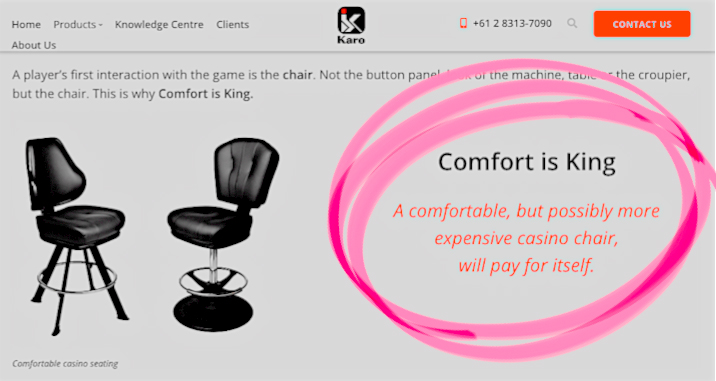
These seats are ergonomically designed so you can comfortably sit for hours on end. They often feature padded cushions and backrests that are contoured to reduce fatigue.
Every design decision in a casino is deliberate. It’s all geared towards having people mindlessly spend as much time playing the poker machine as possible.
The seamless experience of the casino is also present in social media platforms. Features like the infinite scroll and the auto-play function make it easy for you to sit and mindlessly keep consuming content.
When you walk into a casino, you’ll notice that there are no clocks on the walls. They don’t have windows to the outside world either. The games on the pokie machines also never end.
Again, these are deliberate design decisions.
They don’t want you to see the passage of time. What matters most is ‘time on device’ (i.e. the pokie machine).
Social media apps also don’t have stopping cues. You don’t receive a notification prompting you to log off when you’ve been scrolling for several hours. You don’t get to a point where you can’t scroll any further and the feed says “The End”.
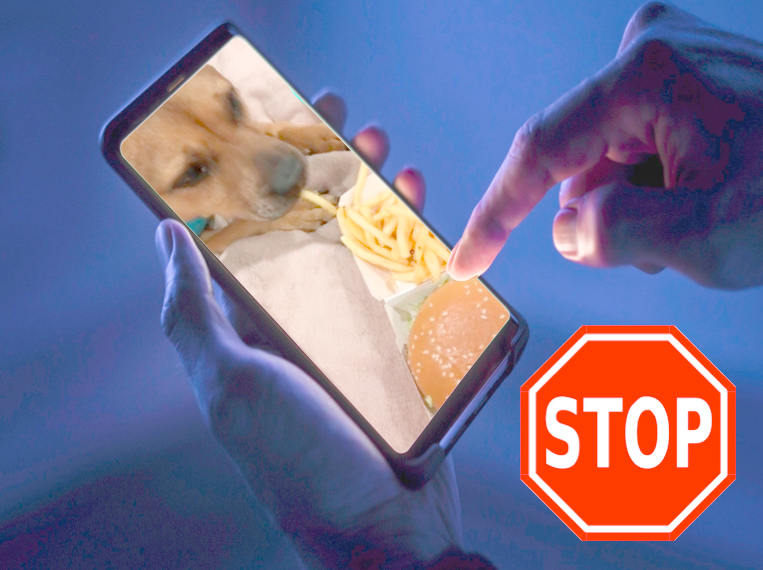
The feed is designed to never end. As Dr Adam Alter says:
“You could sit there for 24 hours and you’ll never get to the end. And so you come back for more and more.”
Like the casino, social media companies want you to spend as much time as possible on their app, regardless of whether the experience is good for you or not. The more time you spend on the app, the more data they can collect and the more ads and sponsored posts you see.
According to Philosopher James Williams when a person plays a poker machine, they are paying for possibility of a surprise. Every now and then, the machine dishes out a reward (some prize money). These random rewards deliver shots of dopamine (a pleasure-seeking chemical). This is what conditions people to keep playing.
Similarly, when you go on social media, there is an element of surprise to the whole experience. You never know when something new and novel is going to appear in your feed.

You can thank the algorithms for this. The algorithms get to know you well (what you like and don’t like). They will suggest content that is similar to what you like but a little bit novel and different. Since your brain loves novelty, more dopamine gets triggered.
It doesn’t take long for your brain to quickly learn that checking social media usually results in a reward. When this happens, you start to crave using it in the same way a gambling addict craves playing the pokies.
Poker machines give people immediate and tangible feedback. You hit the button and instantly you see the reels spinning rapidly. You also receive feedback through sounds and flashing lights. It’s the speed at which you receive feedback that fosters addiction to poker machines.
Social media platforms operate in a similar fashion providing fast feedback mechanisms to keep users engaged. For example, when you post a status update or photo, you typically receive an instant reaction. This quick feedback results in a dopamine hit in the reward centre of the brain.

All of these design mechanisms (e.g., the fast feedback, random rewards and lack of stopping cues) result in users getting stuck in short-term dopamine driven feedback loops. Users become conditioned to associate these platforms with receiving quick and easy rewards (i.e. elevated dopamine levels).
After a few rewarding experiences, it doesn’t take long for the brain to release dopamine whenever it thinks of social media. This is why users can quickly end up spending more and more time on these apps and it can spiral into addiction.
But is it a problem if everyone else is doing it?
Yes, it’s a big problem.
Just like gambling addicts are losing at the pokies, most of us are losing at social media.
We are losing with . . .
• A shortened attention span
• Lowered IQ due to rapid task switching
• Weakened impulse control
• Lost time (less time spent pursuing more meaningful activities)
• Feeling more isolated
• Feeling more outraged
• Body image issues
• Status anxiety
• Poorer mental health
• A reduced ability to make sense of the world together
• Less restorative sleep
• Being in a dopamine deficit state
Too much dopamine released in the brain results in dopamine down-regulation. Psychologist Dr Maggie Baker explains dopamine down-regulation in the following way:
“The stimulation of addictive behaviour causes a massive release of neurotransmitter chemicals [dopamine], drowning crucial brain areas. To protect itself, the brain produces less of these chemicals, thus making it harder for addicted individuals to get pleasure from ordinary enjoyable experiences.”
When dopamine down-regulation occurs, you become enslaved to these platforms. Unless you’re being stimulated by the app, you don’t feel good. You feel anxious and flinchy.
Never before has it been so easy to escape from the discomfort and pain of everyday life.
If you just keep scrolling and tapping, you’ll experience more hits of dopamine. This seamless experience can keep you spellbound for hours.
Dr Natasha Schüll explains this is what keeps gambling addicts playing. She says they don’t play to win. They are pursuing an experience. They want to “get in the zone”, where they are held spellbound for hours.

Most of us have experienced a similar state with social media. This is a state where we can’t stop our finger from scrolling and consuming the endless feed of content. You become totally absorbed in this online world and forget your problems.
Whilst this may make you feel better in the moment, it only makes things worse in the long run.
If you find yourself spending more time than you’d like on social media, I want you to know this . . .
You are not powerless.
Your life can be better. But if you want your life to be different, you will need to start behaving differently.
I took Jaron Lanier’s advice in his book 10 arguments for deleting your social media accounts right now. After I finished reading his book, I deleted my social media accounts immediately.
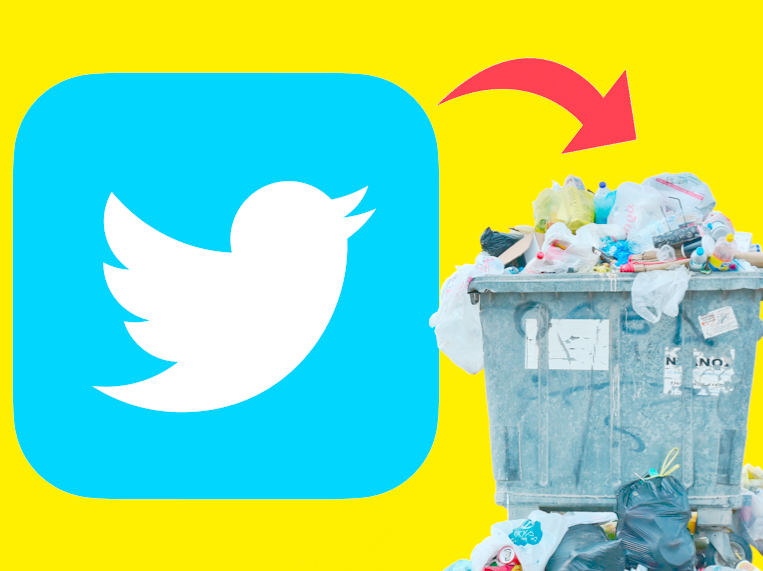
I understand that this isn’t possible for everyone.
Many people don’t have a choice. They are trapped by these platforms. If they want to stay connected to their friends, they are forced to use them.
If that’s the case for you, could you stop using social media for 30 days?
This is what addictions expert Dr Anna Lembke encourages users to do.
Why 30 days?
This is how long your brain needs to restore itself back into balance.
It won’t be easy to begin with. Dr Lembke states “You will feel worse before you feel better”. But push through the pain.
What waits for you on the other side is mental freedom and a greater sense of control over your life.
After spending 30 days off social media, you’ll then need to decide if you want to return to the platforms.
If you do choose to return, put some rules and barriers in place to limit your tech use (e.g., install a blocker app).
It’s also important to spend some time thinking about the following questions:
“Is this was your last day on earth, would you be spending your time on social media? If not, what would you be doing?”
I think we can all agree that being constantly stimulated by a pokie machine is not a good thing. Similarly, it isn’t good for humans to crave the constant stimulation of social media. It’s making so many people anxious, insecure, and flinchy.
Just like the casino doesn’t care if gambling addicts end up broke, social media platforms don’t care if you end up anxious and depressed. They also don’t care if you waste your life consuming content that is the equivalent of KFC for the soul and mind.
These companies are operating with their own best interests at heart. What matters is their bottom line. Until social media is humanely designed, I would recommend getting these toxic platforms out of your life.
Image Credit
“DSC29100, Atlantis Casino Hotel, Reno, Nevada, USA” by jimg944 is licensed under CC BY 2.0 .
Dr Jane Genovese delivers interactive sessions on learning to learn, combating procrastination, exam preparation, how to focus in the age of distraction, habit formation and much, much more!
Get FREE study and life strategies by signing up to our newsletter:
© 2024 Learning Fundamentals